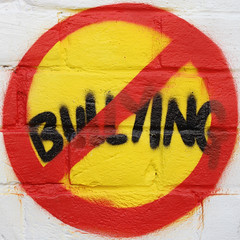This week we explored the world of social networking and how to apply that insanity to the classroom. While ‘status’ sites like Facebook might not always have a place in education, there are some sites that can be utilized to feed off the social networking craze – a craze that will only get stronger and is here to stay. As teachers, we have the responsibility to stay current or even ahead of the tide of technology. By setting up a quality social networking site for our classroom, hopefully one of our students will make a post that informs us of how to stay ahead of this tide.
I learned that Edmodo.com is an excellent education site that utilizes social networking as part of its platform. In my lesson plan I tried to incorporate this function into the discussion forum. Edmodo also has many other useful features, such as the ability to post assignments and quizzes. Perhaps most important is the ability to monitor student posts and delete anything that is inappropriate. I do not see that need happening much at the higher education level, but it can be useful for middle or high school classes.
However, at least in theory, we will not have to worry about inappropriate posts because our students will have signed the Digital Citizenship contract. I learned a lot of new information this week about the nine themes of digital citizenship and how to put those themes into a contract that students and parents can sign. At the heart of being a good digital citizen is treating others like you would want to be treated, but there are many aspects of Digital Citizenship that are unique to the Internet.
The one that stood out the most this week was the subject of cyberbullying. I thought Chris and Alyson did an excellent job of expanding this discussion. It makes me think back to when I was in grade school and the ways students would bully each other then. Bullies back then had it hard compared to the arsenal of bully tools available to today’s cyberbullies. With a click of a mouse, the bully has the ability to harass or embarrass someone in front of the entire online community, and with much more ease than before. Furthermore, it is easier to be a bully anonymously, giving more people the power to spread evil.
Hopefully our students will abide by the terms of our Digital Citizenship contract, but if they don’t, we have the resources available from our school or place of work to stamp out bullies and wrongdoers and make the Internet a safer place for our students.
Comments are closed for this blog post
-
Comment by Ambur Halla on November 20, 2011 at 9:02am
-
Hi Jabon,
I agree that Chris and Alyson helped me understand the problem of cyber bullying quite a bit this week. I am glad you found their discussion helpful too.
I think it's interesting that you said "at least in theory we will not have to worry about inappropriate posts." I agree that "in theory" you shouldn't have to, but in reality you will have to worry about it. Again, Chris had some good examples of how to handle this in the info he shared.
I think your post above is very well-written and insighful. Great job!
Ambur
-
Comment by Ondalee on November 20, 2011 at 11:47pm
-
Jabon,
I think the most important thing for people to know, and remember, is that once something is posted on the Internet, it cannot be erased. Too many people have rapid access and can download and forward the content of a hurtful message before it can be deleted. Young students do not understand the severity of their actions on the Internet.
Ondalee
© 2025 Created by Steve Hargadon.
Powered by
![]()

